Part of the Rosetta spacecraft will land on a comet! Here is what an artist thinks it might look like.
Click on image for full size
Courtesy of ESA
Rosetta Lander
Part of the Rosetta spacecraft will land on the comet. The comet is much
smaller than a planet, so gravity is very weak. The engineers who
built the lander had to make sure it doesn't bounce when it lands. When the
lander touches down, it will shoot harpoons into the icy surface of
the comet. Cables from the harpoons will help hold the lander down!
Rosetta will land on the nucleus of Comet
Churyumov-Gerasimenko. When Rosetta was built, it was supposed to land on
a different comet. There were problems with the rocket that will take Rosetta
into space. Rosetta had to wait
while engineers fixed its rocket. The new comet
is bigger than the old one. It has stronger gravity, so Rosetta will be going
faster when it lands. The engineers had to make the lander's legs better so it
would be ready to land on the bigger comet. Rosetta is ready to go now!
The lander has instruments that
will measure the types of chemicals found
on
the surface of the comet. It also has small drills that will dig into the comet,
so we can find out what is "underground". The lander also
has cameras that will show us what it looks like to stand on a comet!
You might also be interested in:
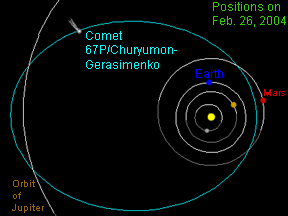
Comet Churyumov-Gerasimenko was discovered in 1969. It is named after the two scientists who found it, Klim Churyumov and Svetlana Gerasimenko. The comet goes around the Sun once every 6.57 years. The
...more
You might have heard of the Rosetta Mission. It was suppose to launch in January 2003. And it was suppose to send a spacecraft to land on a comet. Unfortunately, the launch had to be delayed! But the spacecraft
...more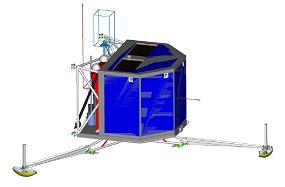
The Rosetta lander has many instruments that it will use to make measurements when it lands on Comet Churyumov-Gerasimenko. The instruments carried by the lander are listed lower on this page. The instruments
...more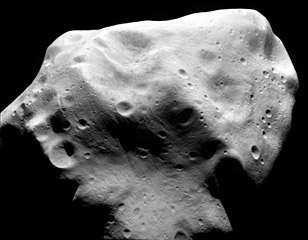
Rosetta is a European space probe. It was launched in 2004. Its main mission is to fly to a comet and land on it. Along the way it has flown by two asteroids. In July 2010 it flew by an asteroid named
...more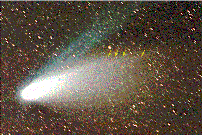
Comet Hale-Bopp was one of the brightest comets of all time. Astronomers witnessed the comet spew out intermittent bursts of dust. The surface seemed to be an incredibly dynamic place, with 'vents' being
...more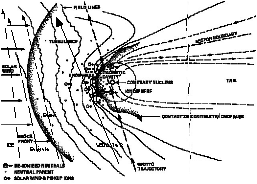
Six spacecraft flew to Halley's comet in 1986. There were two spacecraft launched from Japan, named Suisei and Sakigake, and two from the Soviet Union, named Vega 1 & 2. One spacecraft, ICE, was from the
...more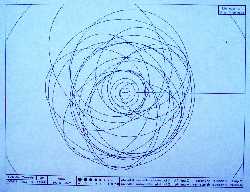
Astronomers have noticed a group of comets which they call the Jupiter Family of Comets. This family of comets is to be found circling between Jupiter and the sun, as shown in this picture. The comets
...more















